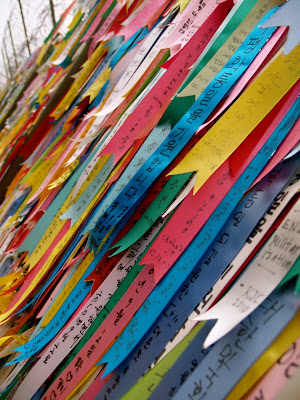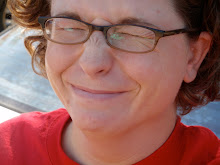
The DMZ was created after a certain point in the Korean War, which divided Korea along ideological lines. The North wanted to spread Communism, with the help of Russia, and the South was determined to stay democratic. It was for this reason the U.S. had to intervene. In the ceasefire of July 1953, the DMZ was created as each side agreed in the armistice to move their troops away from the front line. An armistice is a situation in war where the warring parties agree to stop fighting. It doesn’t mean the war has ended, and indeed it hasn’t since both South Korea and the United States still have a declared war waged on the North, but it’s used while peace attempts are made. The word armistice derives from the Latin words, arma, meaning weapons, and statium, meaning a stopping.
Because of this stalemate, and genuine hostilities between the North and the South, large numbers of troops are still stationed along both sides of the line. The armistice agreement spells out exactly how many military personnel and what kinds of weapons are allowed in the DMZ. Soldiers from both sides patrol the inside of the DMZ, but they can not cross the Military Demarcation Line (MDL.) Sporadic outbreaks of violence due to North Korean aggression has killed over 500 South Korean soldiers and 50 U.S. soldiers along the DMZ since1953.
There are a few companies that offer tours here, which is also referred to as the JSA or Joint Security Area because it’s inhabited by North Korea, South Korea and the United Nations (represented by the U.S.) I went with my friend Todd, and if you remember, I did a blog on his cat Lucky (the insufferable) back in September.
The tour picked us up near Todd’s apartment at 7:10am, which was extraordinarily early considering we had just fallen asleep an hour before! Eventually we got the various members of our party and were on our way!
In order to go on this tour you must bring your passport. Check. I was also under the impression we had to ‘dress up’ for the tour, but it turned out we didn’t. Nuts.
The drive to the DMZ takes about an hour, and it was a relatively uneventful ride until we reached the ‘dynamite box.’ There is only one road leading from the North to the South, and in the event that North Korea attacks South Korea, this box, full of dynamite, will blow up the only connecting road. It was called a box, but really, it was more like a building, it was so big. It was a really good precursor in what we were about to embark on.
Along the road was a river that many a North Koreans have floated down in an effort to spark some kind of warfare with South Korea. After a failed assassination attempt on the South Korean President from such an insurgence, barbed wire fences were put in place to avoid any other attempts. As we progressed toward the DMZ, more and more precautionary signs were evident.
This is the famous ‘Bridge of Freedom.’

















We also heard about the axe murder incident. Back in the 70’s there was a poplar tree blocking the line of sight into the North Korean side, along with the DML. The North had even made a number of attempts to drag United Nations personnel into North Korean territory. So for these reasons, 2 captains and 11 enlisted personnel from South Korea and the U.S. went into the JSA to trim the tree. The captains didn’t wear sidearms because only a certain number of armed soldiers can enter at a time, and the enlisted soldiers covered that.
After trimming began, 15 to 16 North Korean soldiers appeared, commanded by a guy who was nicknamed Lt. Bulldog because of his history of confrontations. They watched the soldiers trimming this tree for about 15 minutes without any sign of discord, until he ordered them to stop because ‘Kim Il Sung personally planted it and nourished and it’s growing under his supervision.’ Hogwash is right! The captains ordered the detail to continue trimming the tree.

Shortly after the incident, North Korean media began airing reports of the fight. The North Korean version stated:
Around 10:45 a.m. today, the American imperialist aggressors sent in 14 hoodlums with axes into the Joint Security Area to cut the trees on their own accord, although such a work should be mutually consented beforehand. Four persons from our side went to the spot to warn them not to continue the work without our consent. Against our persuasion, they attacked our guards en masse and committed a serious provocative act of beating our men, wielding murderous weapons and depending on the fact that they outnumbered us. Our guards could not but resort to self-defence measures under the circumstances of this reckless provocation.
In response to the axe murder incident, the UN Command decided to cut down the tree with the aid of overwhelming force. The operation was named after the mythical lumberjack Paul Bunyan.
Operation Paul Bunyon commenced three days after the killing. A convoy of 23 American and South Korean vehicles drove into the JSA without warning. They came with chain-saws and were armed with pistols and axes, and there were 2 other platoons securing the perimeter.



So far there have been 4 tunnels discovered leading from the North to the South. This tunnel was rather unimaginatively named the Third Tunnel because it’s the 3rd one uncovered. It was discovered in 1978, but as recently as 1990, a fourth tunnel was unearthed. It’s believed that there are up to 10 more tunnels hidden.
Information about this tunnel was provided to the South by a North Korean defector. A defector is someone who seeks asylum from oppression. Many Northerns defect through China, but because of the strong alliance between China and North Korea, if they are discovered they are repatriated and face life imprisonment or death. On this tour I learned the president of Hyundai defected from the North, which I didn't know. We traveled along a road that was nicknamed 'Cattle Road' because when the president of Hyundai defected, he stole one of his fathers cattle to pay the smuggler. After he made his empire, North Korea allowed him re-entry back in 1998 (I think) and as repayment for his theft, he brought 1,001 cattle to North Korea, and they came on this road. Hence Cattle Road.
So the Third Tunnel...



You’re not allowed to take photos inside the tunnel, so I ripped some off the Internet.
I mentioned defectors, and I just found some interesting data relating to this topic. For a period of 30 years, South Korea had a law protecting defectors from the North where every defector was eligible for a generous aid package. After their arrival, defectors would receive an allowance, the amount depended on how useful they were to the South. Defectors who gave especially valuable intelligence were given additional rewards. Prior to 1997 the payments had been fixed in gold bullion, not South Korean won, because Northern’s have an ingrained distrust about the reliability of paper money.
The state provided some defectors with apartments, and all who wanted to study were granted the right to enter a university of his or her choice. Military officers were allowed to continue their service in the South Korean military at the same rank they held in the North. For a period of time after their arrival, defectors were also given personal bodyguards.
Recently, South Korea passed controversial new measure intended to slow the flow of asylum seekers. Officials say these new rules are intended to stop Koreans living in China from entering the South, as well as prevent North Koreans with criminal records from gaining entry.
When a defector arrives to South Korea they have to go through a 3-month resettlement program. The training curriculum is focused on three main goals: easing the socioeconomic and psychological anxiety, overcoming the barriers of cultural heterogeneity and offering practical training for earning a livelihood in the South. Upon completion of the integration program, defectors find a home with government subsidies and receive ₩20 million (about $17,000) to resettle and ₩320,000 ($280) a month.
The number of defectors has increased a staggering amount as you can see:

We also had a stop at the Dora Observatory, where you can look into a North Korean city, but it was way too foggy to see anything. If there wasn't so much fog, I would have been able to take a picture of the flags raised at either side of the DMZ. First South Korea raised their flag, and it was like 60 meters tall, so the North put up a flag pole 80 meters tall. So that prompted the South to install a taller flagpole at 100 meters. The North erected their flagpole at 160 meters and put an enormous flag on it too. Well, the South decided to stop participating in this silly demonstration, and just kept their flagpole at 100 meters. But what's funny is, the North Korean flag is so big that it weighs about a gizillion pounds, so it can never wave in the air, so the only flag you see is the South. Ah, sweet irony.















No comments:
Post a Comment